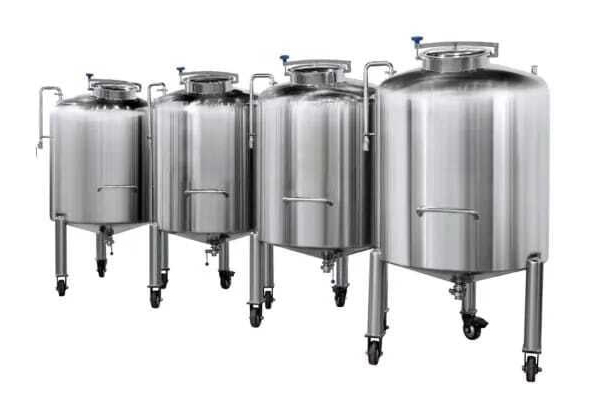MACHINE DESCRIPTION
A Stainless steel storage tanks, commonly used for various liquids like water, chemicals, or food products, function by leveraging the material's corrosion resistance and structural integrity. They typically consist of a cylindrical or rectangular vessel, often with a conical or dished top and bottom, and may include features like inlets, outlets, level indicators, and temperature sensors. The working principle revolves around safely storing liquids while maintaining their quality and preventing contamination.
MATERIAL PROPERTIES
Corrosion Resistance
Stainless steel, especially grades with chromium, forms a passive layer of chromium oxide that protects it from rust and corrosion, making it suitable for storing various substances without contamination.
Strength and Durability
Stainless steel provides the necessary strength to withstand internal pressure and external forces, ensuring the tank's structural integrity and longevity.
TANK DESIGN & FEATURES
Cylindrical or Rectangular
The shape of the tank depends on the application and available space. Cylindrical tanks are common for larger volumes, while rectangular tanks may be preferred for specific layouts.
Inlet & Outlets
These allow for filling and emptying the tank, often with valves for controlling the flow.
Level Indicators
These devices monitor the liquid level inside the tank, providing information for control systems.
Temperature Sensors
These can be used to monitor and control the temperature of the stored liquid, especially in applications where temperature control is critical.
Breathers
These allow air to enter or exit the tank during filling or emptying, preventing over-pressurization or vacuum conditions.
WORKING PRINCIPLE
Storage
The tank's primary function is to store the liquid safely and securely.
Temperature Regulation
Stainless steel's thermal properties can help maintain a stable temperature, especially when insulated.
Mixing/Agitation
Some stainless steel tanks are equipped with mixing or agitation systems to keep the liquid contents homogenous or to facilitate reactions.
Monitoring and Control
Sensors and control systems monitor the tank's contents, ensuring optimal storage conditions and preventing issues like overflow or contamination.
Discharge
The liquid is typically discharged through the outlet, either by gravity or using a pump, and controlled by valves.
